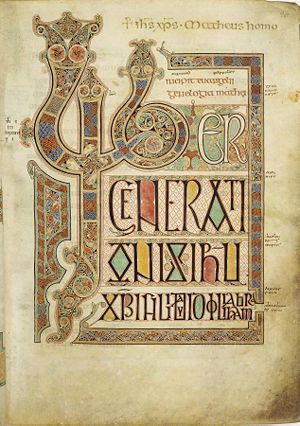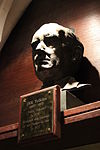Portal:Anglo-Saxon England
Anglo-Saxon England
Anglo-Saxon England or Early Medieval England, existing from the 5th to the 11th centuries from soon after the end of Roman Britain until the Norman Conquest in 1066, consisted of various Anglo-Saxon kingdoms until 927, when it was united as the Kingdom of England by King Æthelstan (r. 927–939). It became part of the short-lived North Sea Empire of Cnut, a personal union between England, Denmark and Norway in the 11th century. The Anglo-Saxons migrated to Britain (Pretanī, Prydain) from mainland northwestern Europe after the Roman Empire withdrawal from the isle at the beginning of the 5th century. Anglo-Saxon history thus begins during the period of sub-Roman Britain following the end of Roman control, and traces the establishment of Anglo-Saxon kingdoms in the 5th and 6th centuries (conventionally identified as seven main kingdoms: Northumbria, Mercia, East Anglia, Essex, Kent, Sussex, and Wessex); their Christianisation during the 7th century; the threat of Viking invasions and Danish settlers; the gradual unification of England under the Wessex hegemony during the 9th and 10th centuries; and ending with the Norman Conquest of England by William the Conqueror in 1066. The Normans persecuted the Anglo-Saxons and overthrew their ruling class to substitute their own leaders to oversee and rule England. However, Anglo-Saxon identity survived beyond the Norman Conquest, came to be known as Englishry under Norman rule, and through social and cultural integration with Romano-British Celts, Danes and Normans became the modern English people. (Full article...) Selected articleThe Staffordshire Hoard is the largest hoard of Anglo-Saxon gold and silver metalwork yet found[update]. Discovered in a field near the village of Hammerwich, near Lichfield, in Staffordshire, England on 5 July 2009, it consists of over 3,500 items that are nearly all martial in character, and contains no objects specific to female uses. Artefacts have tentatively been dated to the 7th or 8th centuries, placing the origin of the items in the time of the Kingdom of Mercia. Experts have produced a range of theories as to where the hoard came from and how it came to be deposited, and whether the objects were made for Christians or pagans. The average quality of the workmanship is extremely high, and especially remarkable in view of the large number of individual objects, such as swords or helmets, from which the elements in the hoard came. The hoard was valued at £3.285 million, and has now been purchased by the Birmingham Museum & Art Gallery and the Potteries Museum & Art Gallery. (more...) Did you know?
SubcategoriesSelected image Folio 27r from the Lindisfarne Gospels contains the incipit from the Gospel of Matthew. The Lindisfarne Gospels (now kept in the British Library) is an illuminated manuscript gospel book produced around the year 700. Selected biographyJohn Ronald Reuel Tolkien, CBE (/ˈtɒlkiːn/; 3 January 1892 – 2 September 1973) was an English writer, poet, philologist, and university professor, best known as the author of the classic high fantasy works The Hobbit, The Lord of the Rings, and The Silmarillion. After his death, Tolkien's son Christopher published a series of works based on his father's extensive notes and unpublished manuscripts, including The Silmarillion. These, together with The Hobbit and The Lord of the Rings form a connected body of tales, poems, fictional histories, invented languages, and literary essays about a fantasy world called Arda, and Middle-earth within it. Between 1951 and 1955, Tolkien applied the term legendarium to the larger part of these writings. (more...) Things you can do
Featured articles and lists
Related portalsWikiProjects
Associated WikimediaThe following Wikimedia Foundation sister projects provide more on this subject:
| |||||||||||||||||














